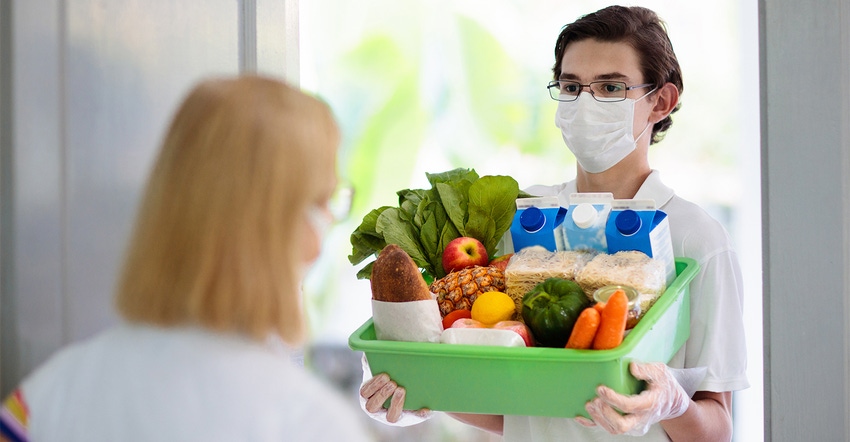A new study from Intent Labs highlights how food and beverage purchasing patterns and habits have be affected by COVID-19.

The COVID-19 pandemic has affected every walk of daily life, including the ways people interact, work, teach and, yes, shop for and consume their food. With restaurants across the country closed or operating at much less than full capacity and some grocery stores being unable to restock to keep up with demand, the ways people shop for and consume their food and beverage changed dramatically in 2020, and a recent report from Intent Lab—a research collaboration between Performics and Northwestern University Medill School of Journalism, Media, Integrated Marketing Communications—has the data to show what that shift truly looked like.
The report, “Digital Satisfaction Index Spotlight: Shifts in Digital Food Shopping Behavior During COVID19,” focused on how consumers interact with the internet and their satisfaction level in doing so. With so many people across the country confined at home and unable to eat at a restaurant or even shop the way they once did, online shopping in the food and beverage space exploded in 2020.
According to the study, people are spending more time connected to the internet than ever before. This makes sense, with many people now working, schooling and otherwise interacting with friends, family and colleagues virtually. This increased connectedness to the internet also meant people were utilizing the web for their food and beverage at an all-time high. Since the beginning of the COVID-19 pandemic, 19% of consumers switched to food and grocery delivery services exclusively, foregoing any physical food shopping or dining occasions. The study showed about 1 in 3 consumers used food or grocery delivery at least once per week before the pandemic; since, that number has jumped to more than half (51%). The percentage of people using such services two to three times per week also increased from 19% to 23%. Perhaps most notable, the percentage of consumers who claim to never use such services dropped from nearly 1 in 5 (19%) pre-pandemic to zero.
The COVID pandemic and resulting quarantine/semi-quarantine has resulted in increased use of many types of food and grocery apps and services. Perhaps unsurprisingly given the difficulties of 2020, alcohol delivery services saw the largest increase in usage, with a 129% increase from pre-pandemic to now. Grocery delivery (110% increase) and food preparation subscription services (110%) also saw huge jumps. Beverage subscriptions, food delivery and review apps, and restaurant and coffeeshop websites also saw increased usage. Similarly, online retail giants including Amazon and Walmart benefitted from an increasingly digital food and beverage landscape. Third-party delivery apps, like Instacart for groceries and Grub Hub, Uber Eats and Door Dash also benefitted from both increased use and discovery.
Of course, concerns about these types of apps and services still exists. "Despite the rise of food and beverage delivery platforms, the Intent Lab study also found that consumers are concerned about well-known barriers in this category, including freshness, not having free shipping and lack of return options," said Esteban Ribero, Performics’ senior vice president of planning and insights. He also noted some concerns exist about safety and hygiene, especially among consumers most anxious about COVID-19 in general.
When it comes to the overall message brands can take away from the study, Ribero emphasized apps and experiences must deliver on low-contact or contactless delivery and seamless experiences. He concluded, “The Intent Lab has consistently found that digital literacy is a key driver of digital satisfaction, so make it as simple as possible for all consumers to use your apps, but allow sophistication for those skilled in getting the most out of digital tools."
Everything about daily life changed in 2020. Even with a vaccine finally on the horizon and a light beginning to emerge at the end of the tunnel, consumers have perhaps seen the future of food and beverage purchasing. Regardless of whether a return to normalcy is on the menu in 2021, the digital food and beverage revolution may be here to stay.
About the Author(s)
You May Also Like






